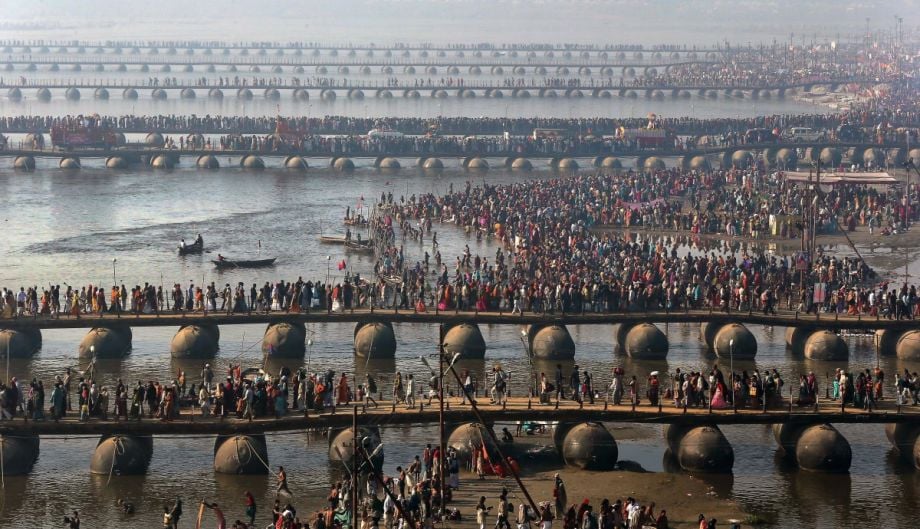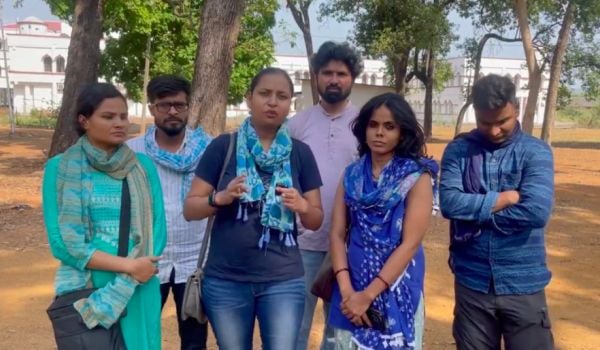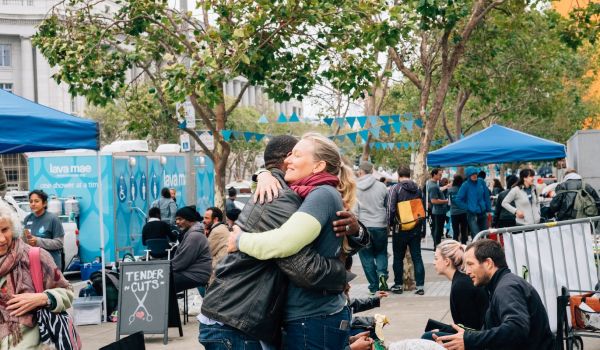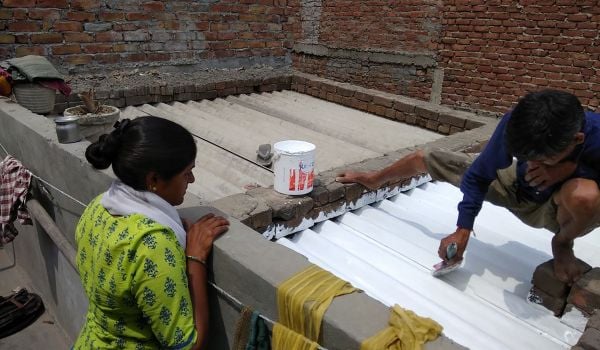India’s orange-robed godmen are rarely the focus of urban planners. But later this year, 40 million religious pilgrims are expected to descend upon Nashik — a rapidly growing city a few hours from Mumbai — and, almost overnight, swell the modest metro into the largest city in the world.
The 20-day Hindu festival, the Kumbh Mela, can attract crowds the size of multiple New York Cities on a single day. The religious event takes place every three years when devotees make the trek to one of four alternating cities — Allahabad, Nashik, Hardiwar or Ujjain — to bathe in one of the sacred rivers. While the spiritual seek to cleanse themselves of sin, urban innovators, policymakers and planners see the population surge as an ideal opportunity to gather data and test new ideas related to pop-up cities and rapid urbanization.
“It’s a perfect set of problems,” says Daniel Goodman, a graduate student in the MIT Media Lab, which helped organize a weeklong “innovation sandbox” called the Kumbhathon in Nashik earlier this year. “The Kumbh Mela doesn’t last very long, but during that time it stresses the city on all fronts. It forces us to think about fundamental problems, such as sanitation, food distribution and good utilities.”
The Kumbhathon, which was conceptualized by Nashik-based innovator Sunil Khabdbahale and Ramesh Raskar, head of Camera Culture Group at the MIT Media Lab, set out to understand the challenges faced by host cities of the Kumbh Mela and experiment with technologically focused interventions. The group received more than 500 responses on its open, crowdsourced platform that asked the public to identify key areas of concern. Organizers whittled that long list down to 12 target themes that included health, housing, food, payments and transportation.
Understanding the challenges was just the beginning. In January 2015, the Kumbhathon brought together innovators from 20 cities across India to get creative with tackling the issues at hand. Participants came from a broad range of fields — from computer science to mechanical engineering to business and public health — and gathered in Nashik for a week to look more closely at the city, its current and future challenges and brainstorm on best ways to intervene in better managing the soon-to-be megacity. MIT faculty, entrepreneurs and industry experts acted as mentors to the groups, and local experts from Nashik challenged their ideas with personal experiences and knowledge of the current urban landscape. The ideas were also evaluated by technical innovators for deployment, marketability and scalability.
Nashik is an ideal city to study and test the stresses of urbanization and what can be done to prepare for it. The city is the 16th-fastest growing metropolis in the world and one of the fastest growing in India. The Kumbh Mela will send that growth into overdrive for a few weeks. Nashik has also been selected as one of Prime Minister Narendra Modi’s “100 Smart Cities,” an initiative launched last year to drive forward technology in urban development around India.
While India’s megacities such as Mumbai and Delhi capture most superlatives, architect Rahul Mehrotra, chair of Harvard’s Department of Urban Planning and Design, has been urging policymakers and planners to look beyond the major metropolises to the emerging metros such as Nashik. In an article in the Hindu in 2011, he said, “Furthermore, it is crucial for us as a nation to focus on our small towns and tier two cities; these will comprise a vast majority of the urban Indian population in the future. These are also places (unlike the megacities and primary towns) that are not locked into unsustainable paradigms and where planners still have possible ways of intervening.”
One of the ideas for intervening devised by Kumbhathon participants is an epidemic tracker. Major public health crises, particularly in the wake of the Ebola outbreak, have brought new challenges to developing world cities. Like the Kumbh Mela, these cities often lack accurate data on crowded informal settlements, where disease can spread quickly, making it difficult to react in case of an event. The epidemic tracker monitors the health status of people in real time to check and control disease outbreaks. Up-to-the-minute information could enable medical staff to identify individuals with threatening symptoms and quickly provide them with the necessary care to prevent further infection.
Another major logistical challenge during the Kumbh Mela is food distribution. The Kumbhathon participants devised a system that connects festival-goers with quality food suppliers. “Such a model could bolster the Indian food industry and potentially translate into a multibillion-dollar service across India that caters to the lower-income population,” according to one Kumbhathon report. The issue, it said, is that customers have to make risky food transactions, because they often have little or no information about when the food was cooked, who cooked it or the rating of the person who cooked it. Information linkages such as these enhance the experience, safety and running of pop-up cities.
But, urge Kumbhathon organizers, the potential of these innovations go beyond this one event. “This is not just to help the Kumbh Mela,” says Kumbathon co-founder Khabdbahale. “This is about promoting innovation in cities like Nashik. We have a big opportunity here to test ideas for city optimization around India.”
The Science of Cities column is made possible with the support of the John D. and Catherine T. MacArthur Foundation.

Carlin Carr is an urban development professional interested in innovative ideas for social change.

















